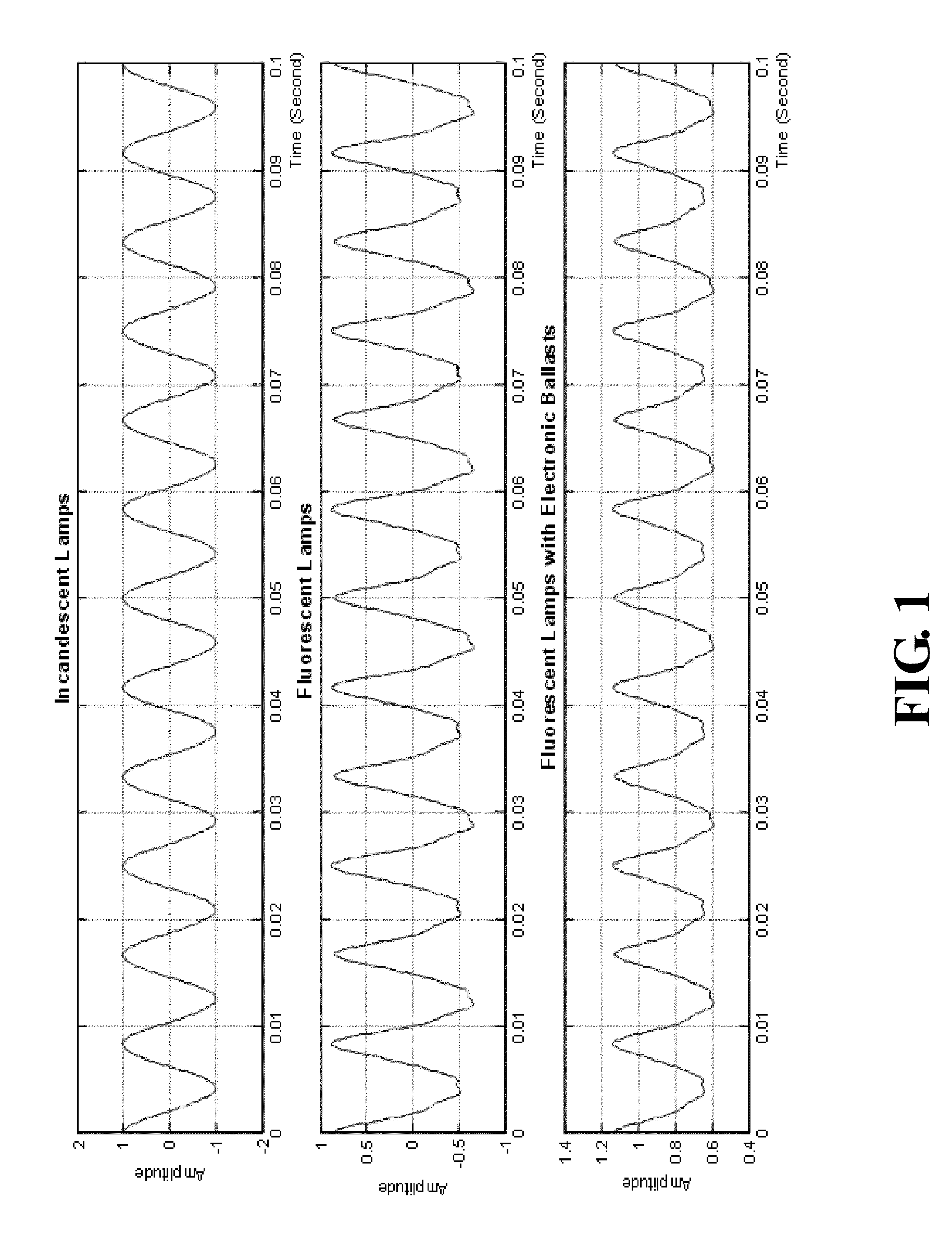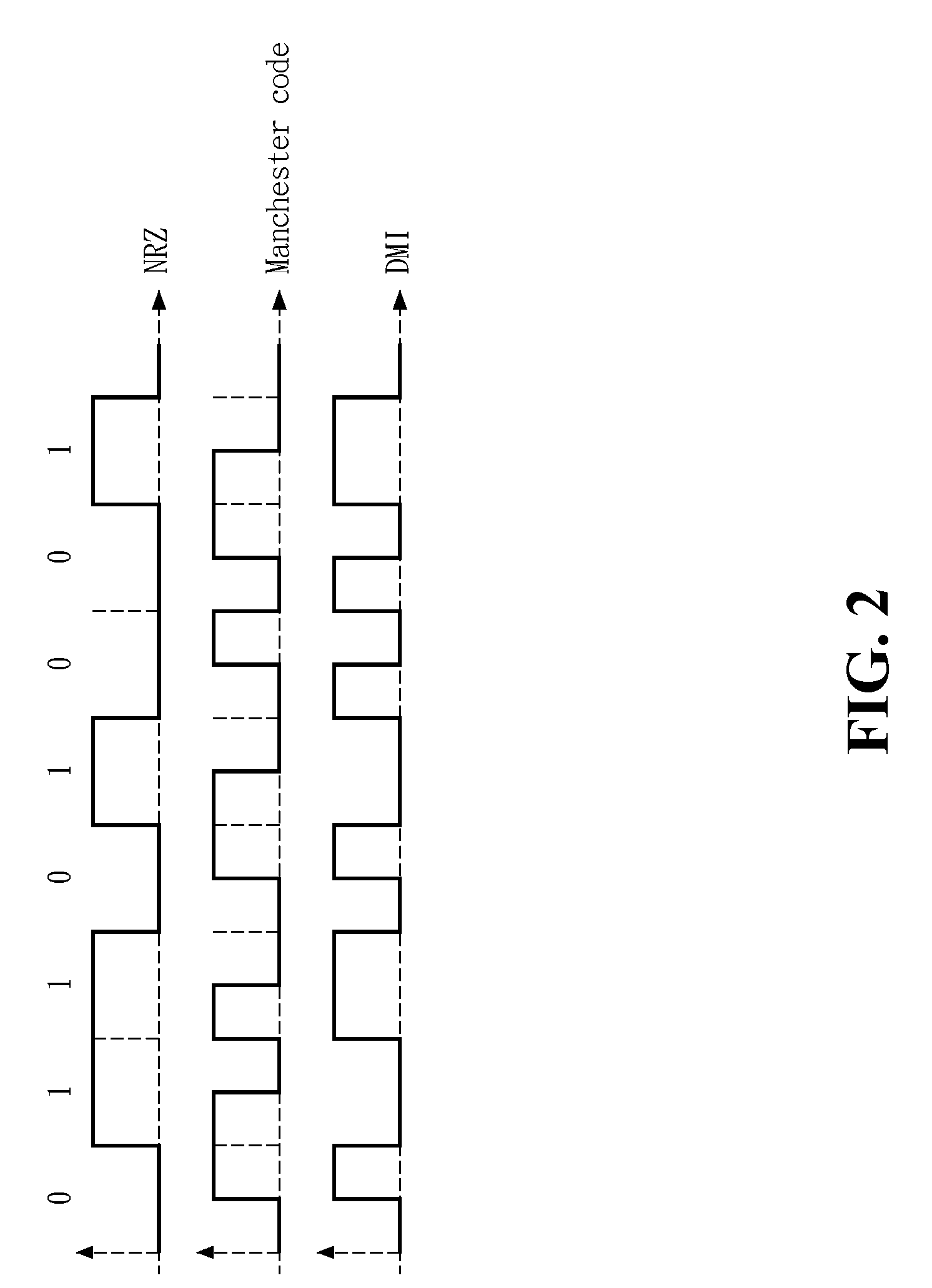Interference-Rejection Coding Method For An Optical Wireless Communication System And The Optical Wireless Communication System Thereof
a technology of optical wireless communication and coding method, applied in electromagnetic transmission, electrical equipment, transmission, etc., can solve the problems of affecting the use of other electronic instruments, affecting the safety of communication, so as to reduce the demands on the specification and the cost of analog front-end, and effectively and stably reject optical interference
- Summary
- Abstract
- Description
- Claims
- Application Information
AI Technical Summary
Benefits of technology
Problems solved by technology
Method used
Image
Examples
Embodiment Construction
[0024]The present invention uses the delay modulation together with block code to modulate the signal to high frequency, and then uses a narrow-band band-pass filter to reject the low-pass interference. FIG. 3 shows the signal frequency spectrum characteristics of various line coding schemes and the present invention. As shown in FIG. 3, the required bandwidth for the signal using delay modulation with block code of the present invention is less than that of other line coding techniques, such as Manchester or NRZ. This invention includes cascade coding and filtering and is applicable to wireless, medical or encrypted communication systems or environments.
[0025]At the transmitting end and the receiving end, the present invention arranges a pair of corresponding modulation and demodulation modules, respectively. Thereby, the receiving end may correctly decode the signals coded by the transmitted end. The present invention also uses delay modulation to concentrate the power of the opti...
PUM
 Login to View More
Login to View More Abstract
Description
Claims
Application Information
 Login to View More
Login to View More - R&D
- Intellectual Property
- Life Sciences
- Materials
- Tech Scout
- Unparalleled Data Quality
- Higher Quality Content
- 60% Fewer Hallucinations
Browse by: Latest US Patents, China's latest patents, Technical Efficacy Thesaurus, Application Domain, Technology Topic, Popular Technical Reports.
© 2025 PatSnap. All rights reserved.Legal|Privacy policy|Modern Slavery Act Transparency Statement|Sitemap|About US| Contact US: help@patsnap.com



